The rights of bugs

One of our goals for all students in our school is to take action as mindful citizens who care about making contributions to a future that acknowledges living systems as an integrated whole. We want every child to know, as we do, that their unique ways of being offer essential ideas and strategies which deepen and broaden all of our understandings. Right now, these young children have the capacity to shape our world for the greater good.
We know that their natural learning strategy of play supports their evolving theories about the world. As we play together, we’re paying close attention to what captures the children’s imaginations. One of the questions that’s guiding our research this year is:
How might our relationship with the natural world grow our abilities to think and act courageously and collaboratively for the good of all?
With this question in mind, when the Cedar (ages 3-5) teachers noticed this next moment, we captured it and brought it back to the children. We saw its potential for bringing together the community.
One day during Explore, a few children were using tempera paint at a table when Bishop was suddenly surprised: he had found a bug crawling on a paint jar!
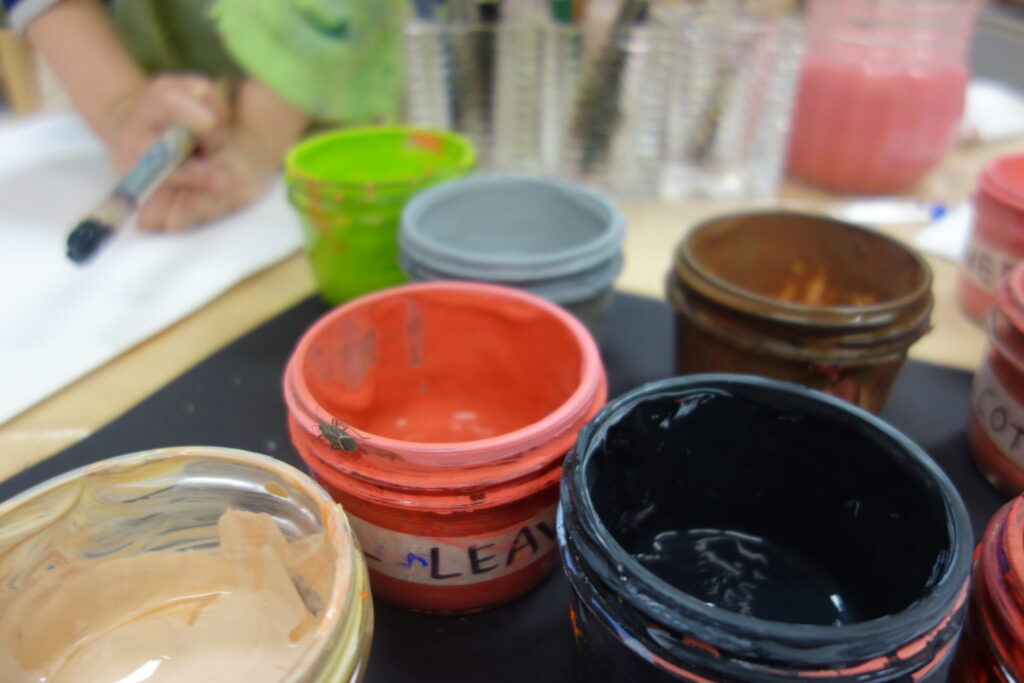
Bishop: It wants to play chase with you, Marlowe.
Marlowe: I think it wants to paint.
Sanjay: This bug needs to be free in the wild. I’m painting this tree so it can be free.
Marlowe” We have to let every bug free we see in the classroom, we have to put it in a plant, and then paint a reminder and put it on … hmm … where should we put it?
Sanjay: This is a tree …
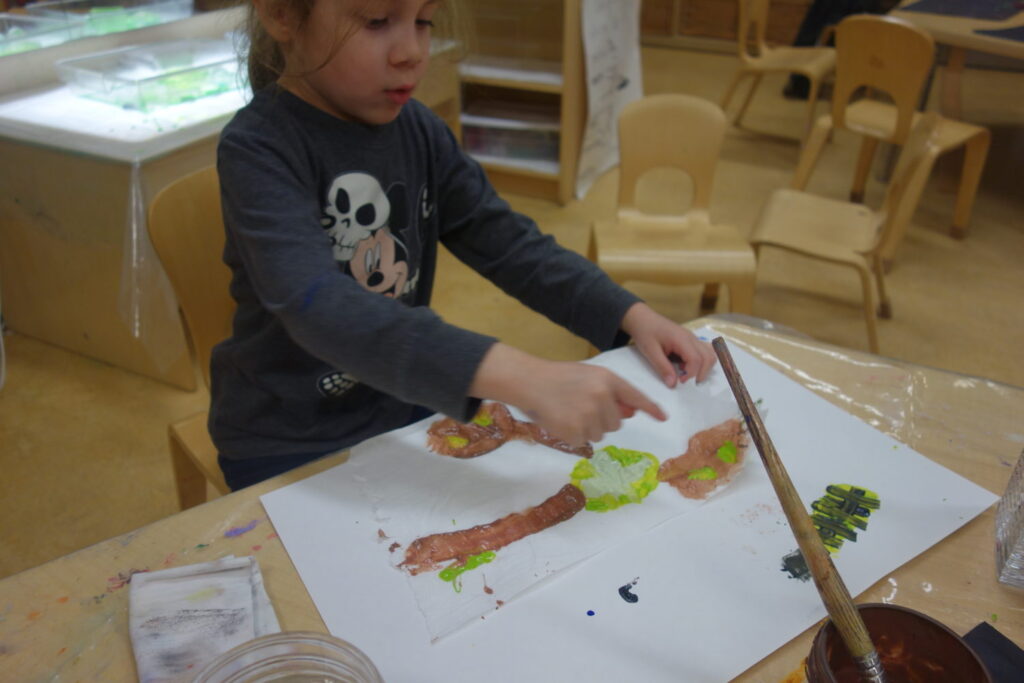
Marlowe: It’s going to say, “Put the bug free. We don’t forget.”
Sanjay: … bugs like trees because there’s leaves on trees …
Marlowe: I have an idea for all of us … maybe we could tape them all together and make a collaboration because we are all making some stuff for the same bug and we are going to make a real plan to set the bug free!
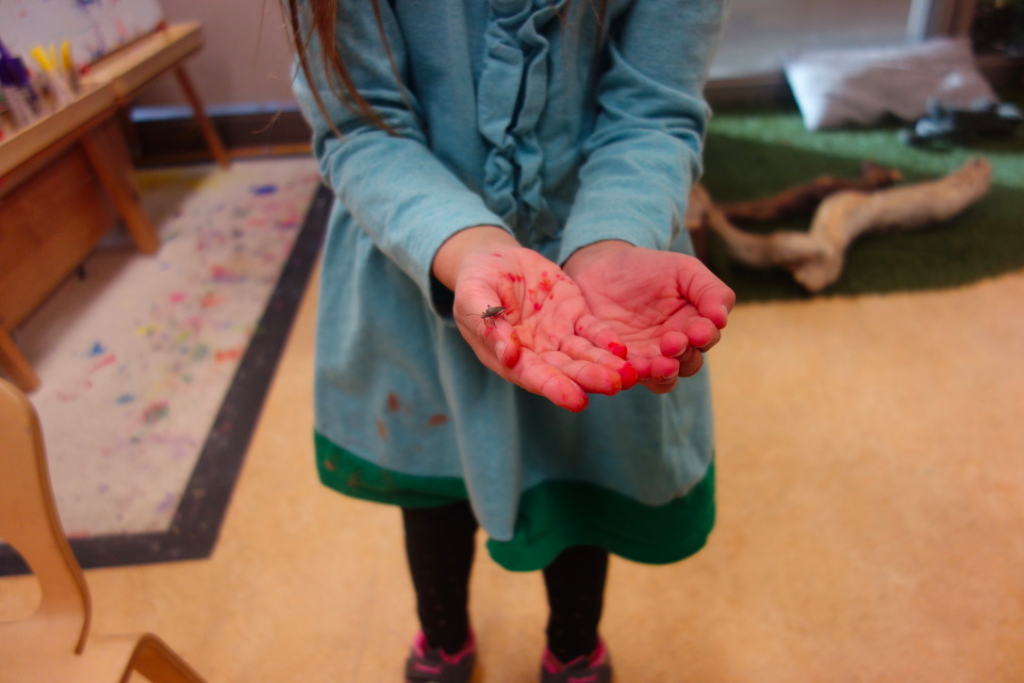
Marlowe: And even we could make more posters so that if other people see, we could all set them free!
All the children at the table cheered.
Here they are, making posters, inspired by Marlowe’s idea:
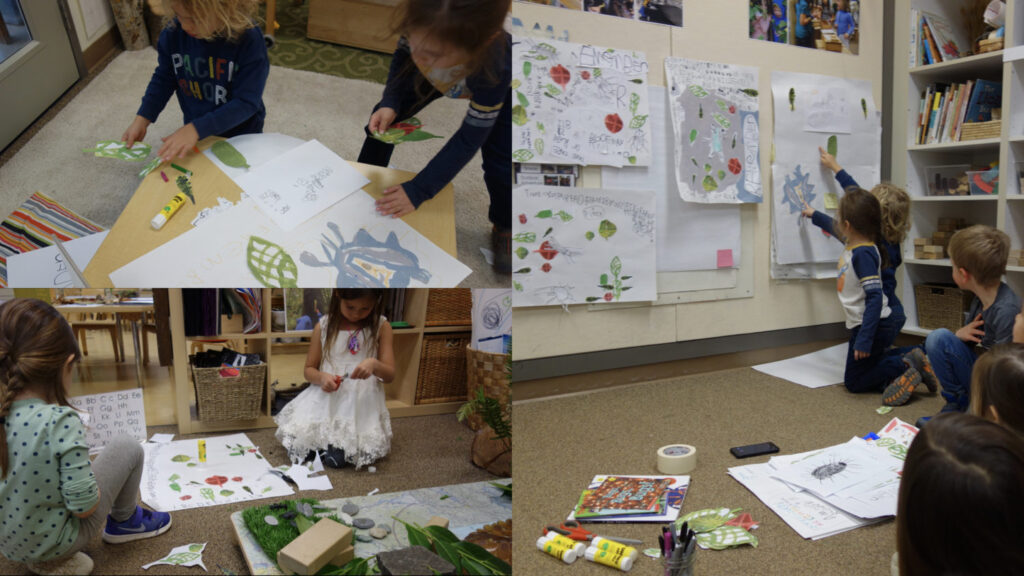
This moment reveals how children use their own provisional theories and life experiences to make sense of the world. They see themselves in this bug: their desire to play, to be seen, to be free. In doing so, they reveal unimagined possibilities to us. Their curiosity and playful exploration guide us on new path forward.
We knew this was an important moment — we could hear the children’s energy around bugs — but we didn’t know it would launch the children’s investigation into the lives of bugs.
The children were unified around a shared purpose, they cared deeply about the bugs in their classroom and they wanted to be sure that others cared about them too. This was evident when it was time for our school-wide gratitude celebration during the week of Thanksgiving.
The Cedar children gave each classroom a poster, alongside an important message.
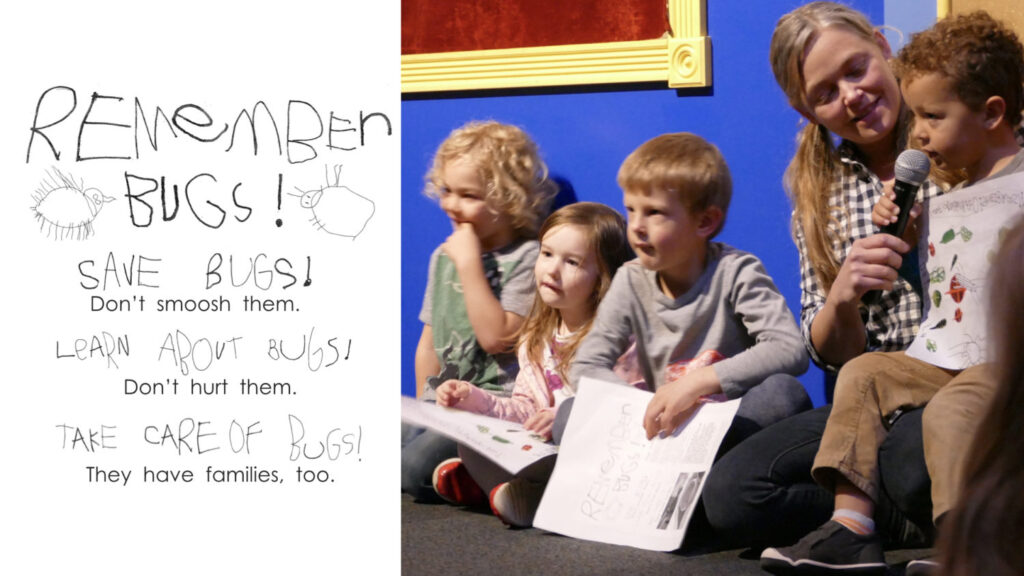
As the children began to find more bugs in the classroom, we heard the children sharing their own past experiences about bugs with each other. We heard emerging theories about why the bugs were in the museum, but more so, we heard how their families felt about and dealt with bugs.
We offered the children lots of time to play with questions, materials and each other so they could consider what they care about as individuals beyond the edges of their family and within this learning community.
As teachers, we want to create space for all of their beliefs and understandings. We believe that divergent thinking is necessary for keeping the questions and experiences big and complex. Here are a few sneak peeks…
Marlowe: We need bugs to survive.
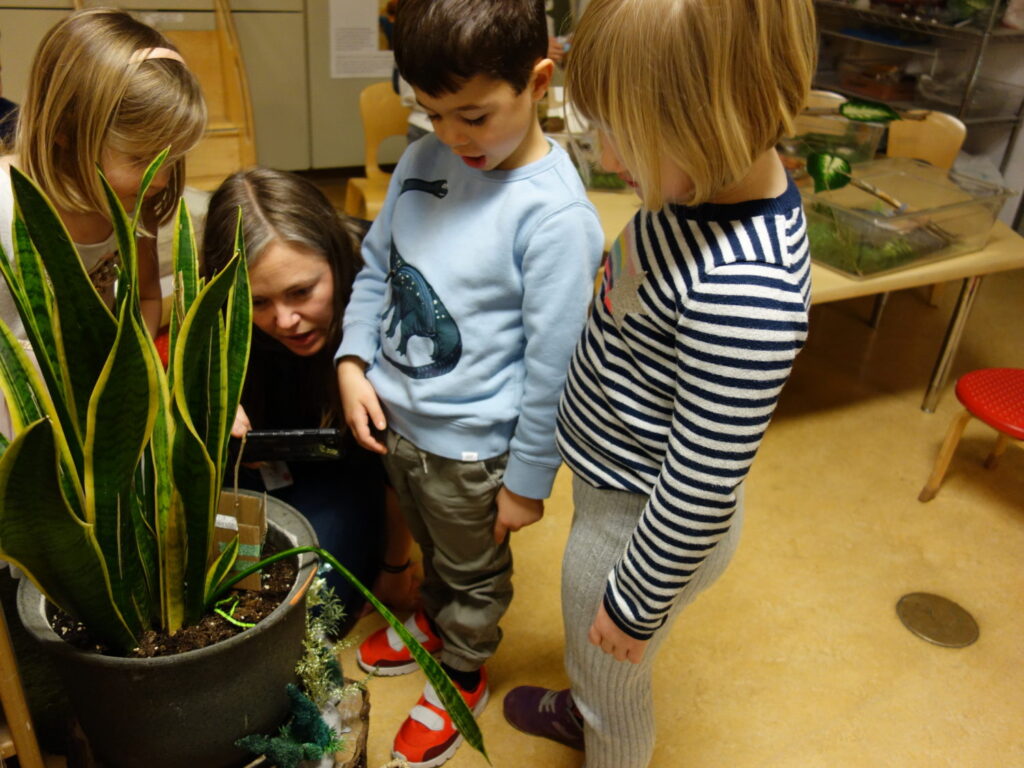
Inara: I’m really worried about the bugs … if they’re lost or not.
Teacher: Why are you worried about the bugs being lost?
Inara: Because when you’re lost you can’t get back to your family. They might be looking for them!
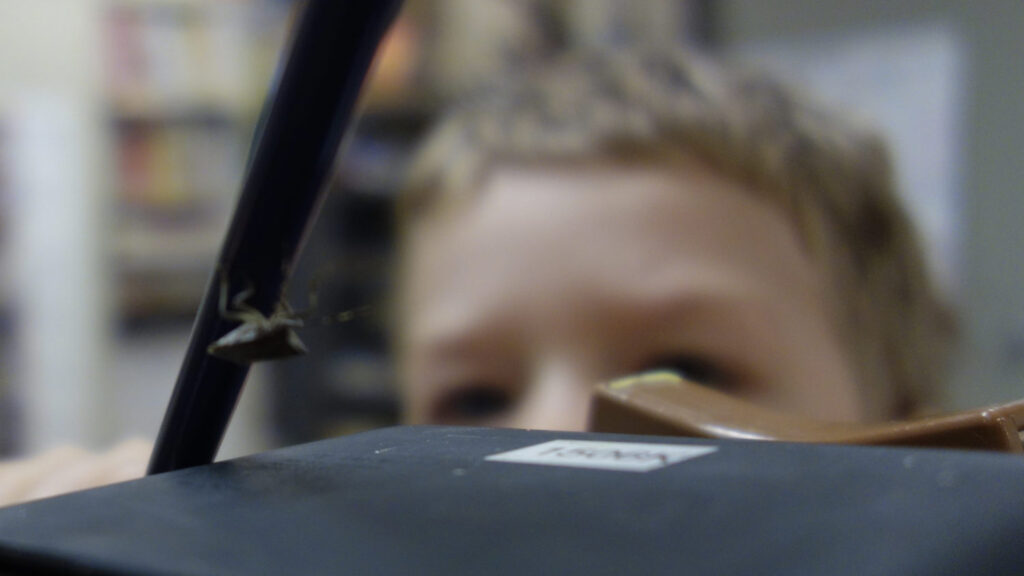
Will: Imagine what it would be like if you were them…
As we began collecting their ideas about bugs, it sparked more questions for us to be exploring alongside the children: How might we all come together to decide what we care about? How will we show our care for things? What do we need to know from our friend’s perspective before we smoosh bugs? What will happen if we only consider our own perspective, or if we elevate it to be the only one that counts? How will we use our relationships to help us inspire others to care, too?
We hear the children grappling with questions that adults grapple with too: Why should we care about something that might hurt us? When should I hurt something before it can hurt me? How can we live together if we spend our time protecting ourselves from each other?
We aren’t trying to get them all to arrive at the same conclusion, to conform to the same idea, instead we’re trying to give them opportunities to listen to each other and make their own decisions because we want them to be critical thinkers.
The children in Cedar care so much about bugs, and they want others to know that bugs need our help. As Marlowe said, we can’t survive without bugs … and through their research the children are wondering if bugs can’t survive without us. This visceral experience with interdependence is helping them practice making decisions that will inform their interactions within the human ecosystem, too. They realize that caring about bugs is not intrinsic for everyone, they see this in the words and actions of their families and friends. And it has us wondering: Without different perspectives and interpretations about how to care for bugs, would there be any need to be an advocate?
The children are constructing their understanding of being a voice to others who don’t have one. They’re starting to see the value of taking action on behalf of something beyond themselves, and the impact that they have in the world.
Since that day when the bug chose to go to paint with Bishop during Explore, bugs have continued to capture the children’s attention, provoke their curiosity, and inspire everyone to practice genuine empathy. We noticed a shared understanding emerging that bugs have rights, just like us:
To have water.
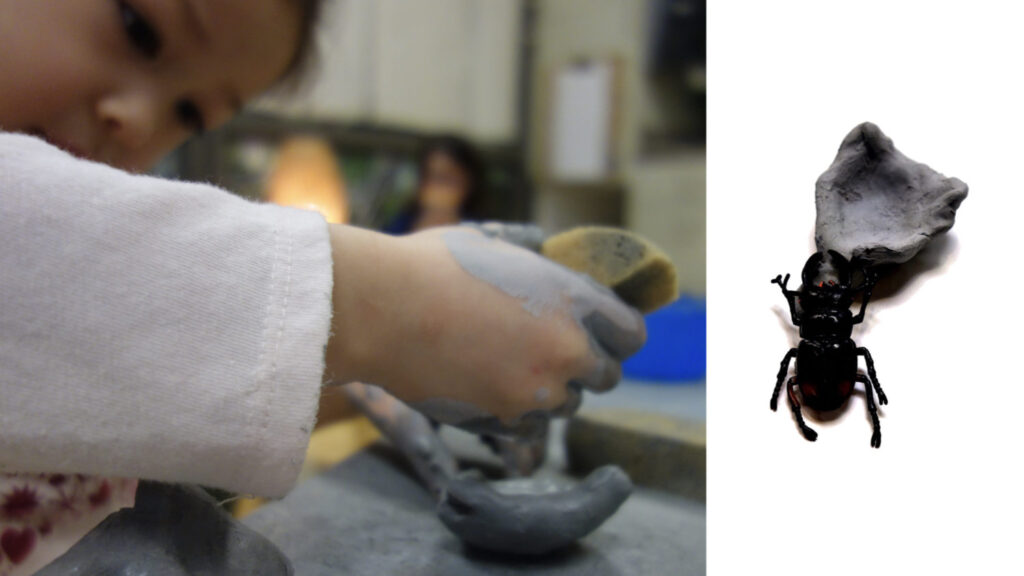
To be protected from danger.
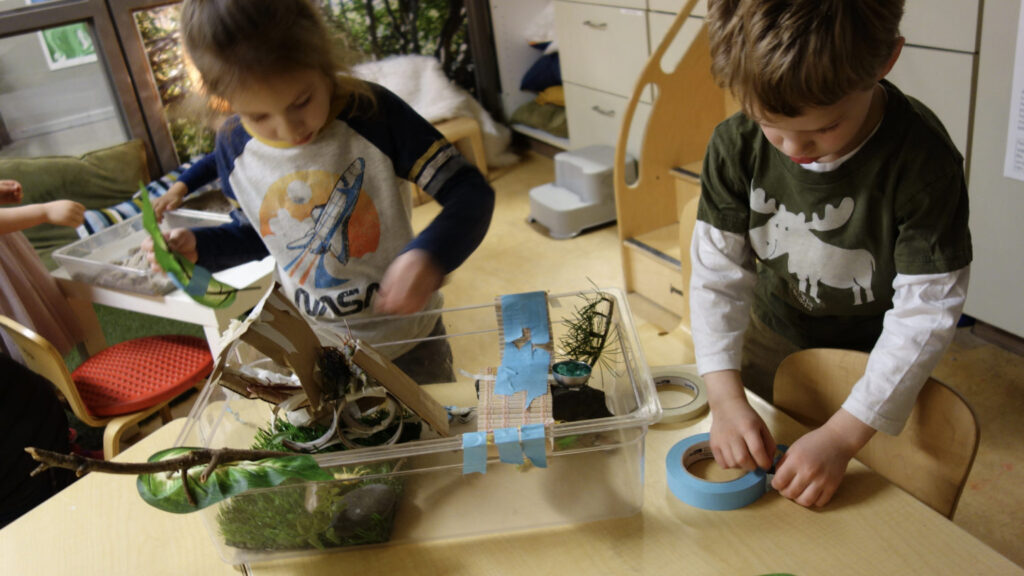
To be seen and heard.
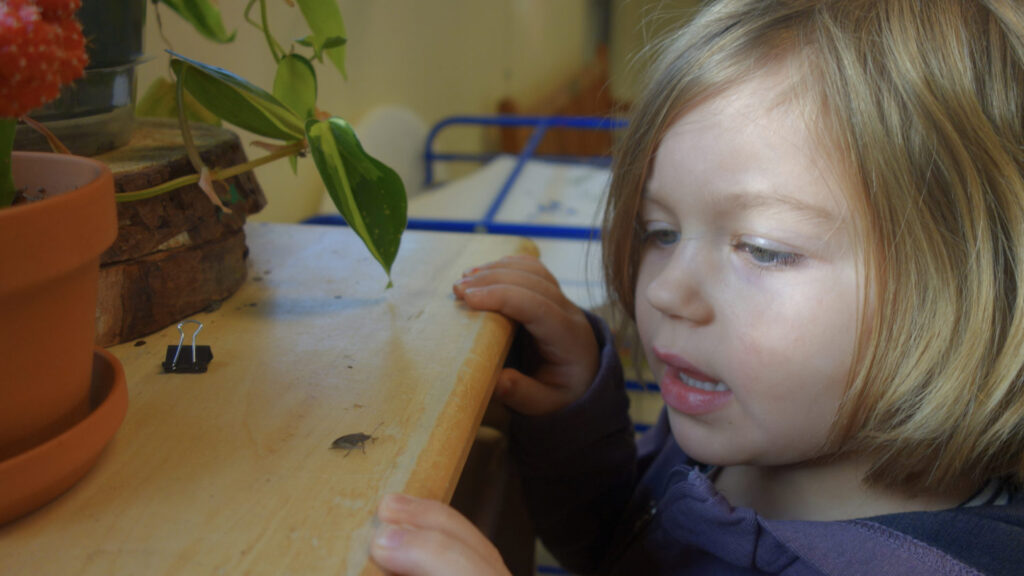
To be near family.
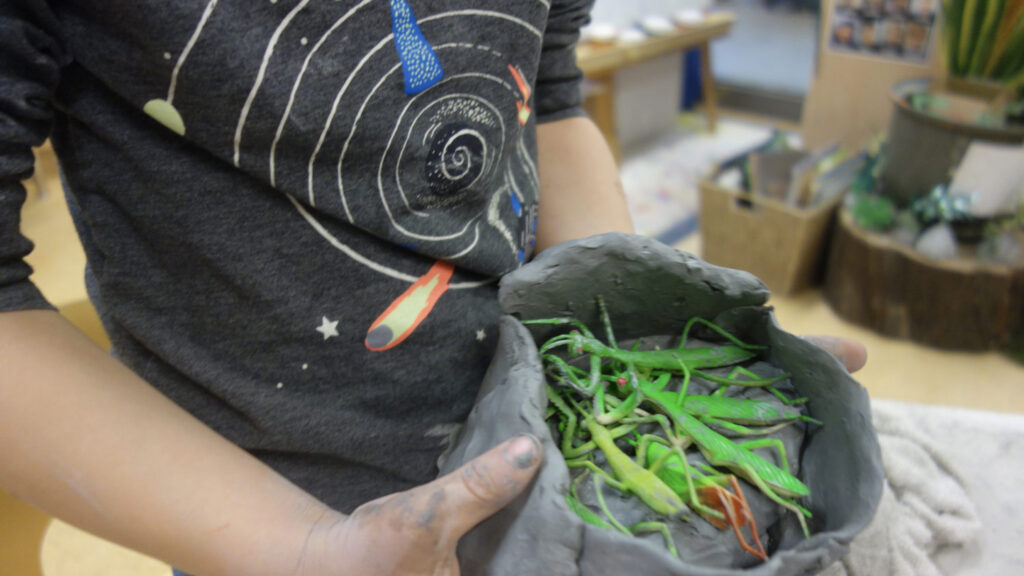
To be able to find a way home.
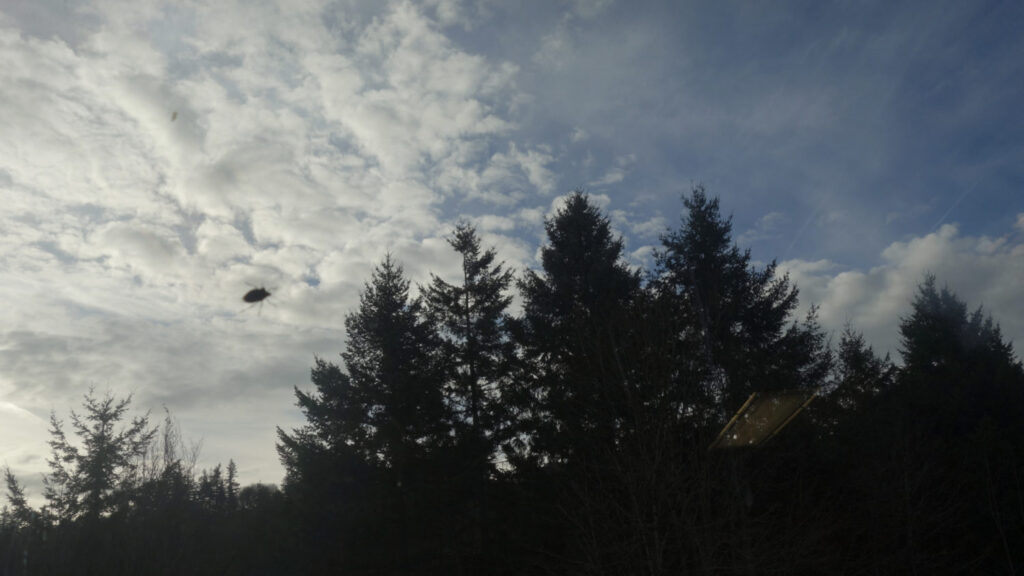
… and to have a cozy bed to sleep. And now we wonder:
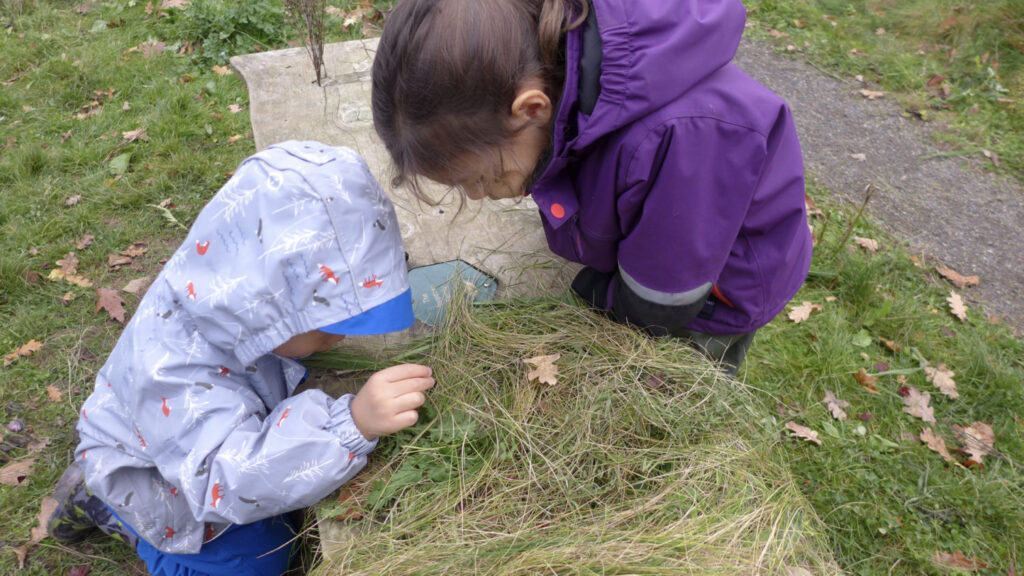
By considering the rights of bugs, what might the children uncover about the rights of all living beings?
We know that this study of bugs is important – and we know it’s not really about bugs. The ideas that the children are grappling with are fundamental to democratic living.
Who has the power to determine if others belong? Who is moved to the fringes? Who’s life has more value than others? Who will protect those who are more vulnerable? What do we care about, individually and collectively, and what civic action will we take for the good of all?
We believe these young children have wisdoms that are vital to our democracy so we’re going to continue leaning in, listening carefully and reflecting back what we notice and wonder.
